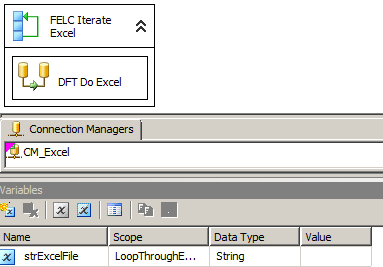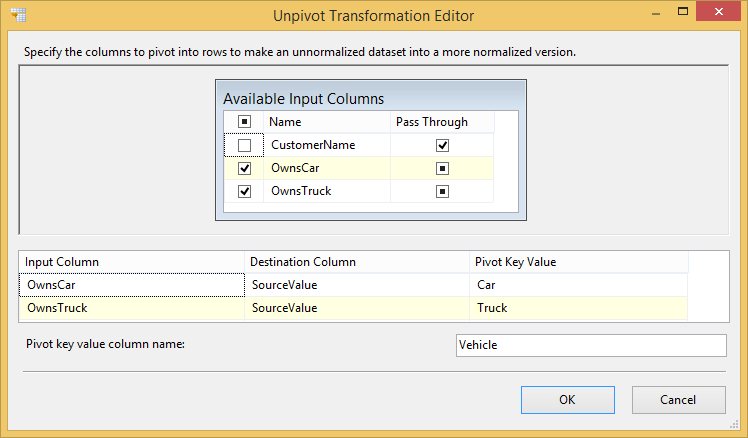To profiler, we go! I ran a TSQL Trace against a 2014 instance (that had previously had an SSISDB catalog so this might be missing some conditional checks). Line breaks added for readability
First step, it creates a table variable and populates it with values from the SSISDB catalog, if the catalog exists.
It's an interesting query result
exec sp_executesql N'
--Preparing to access the Catalog object
DECLARE @t_catalogs TABLE (
Name sysname COLLATE SQL_Latin1_General_CP1_CI_AS,
EncryptionAlgorithm nvarchar(256) COLLATE SQL_Latin1_General_CP1_CI_AS,
SchemaVersion int,
SchemaBuild nvarchar(256) COLLATE SQL_Latin1_General_CP1_CI_AS,
OperationLogRetentionTime int,
MaxProjectVersions int,
OperationCleanupEnabled bit,
VersionCleanupEnabled bit,
ServerLoggingLevel int,
OperationLogNumberOfRecords int,
VersionLogNumberOfRecords int)
IF DB_ID(''SSISDB'') IS NOT NULL
BEGIN
INSERT INTO @t_catalogs VALUES(
''SSISDB'',
(SELECT [property_value] FROM [SSISDB].[catalog].[catalog_properties] WHERE [property_name] = N''ENCRYPTION_ALGORITHM''),
(SELECT CAST([property_value] AS INT) FROM [SSISDB].[catalog].[catalog_properties] WHERE [property_name] = N''SCHEMA_VERSION''),
(SELECT [property_value] FROM [SSISDB].[catalog].[catalog_properties] WHERE [property_name] = N''SCHEMA_BUILD''),
(SELECT CAST([property_value] AS INT) FROM [SSISDB].[catalog].[catalog_properties] WHERE [property_name] = N''RETENTION_WINDOW''),
(SELECT CAST([property_value] AS INT) FROM [SSISDB].[catalog].[catalog_properties] WHERE [property_name] = N''MAX_PROJECT_VERSIONS''),
(SELECT CAST([property_value] AS BIT) FROM [SSISDB].[catalog].[catalog_properties] WHERE [property_name] = N''OPERATION_CLEANUP_ENABLED''),
(SELECT CAST([property_value] AS BIT) FROM [SSISDB].[catalog].[catalog_properties] WHERE [property_name] = N''VERSION_CLEANUP_ENABLED''),
(SELECT CAST([property_value] AS INT) FROM [SSISDB].[catalog].[catalog_properties] WHERE [property_name] = N''SERVER_LOGGING_LEVEL''),
(SELECT COUNT(operation_id) FROM [SSISDB].[catalog].[operations]),
(SELECT COUNT(object_id) FROM [SSISDB].[catalog].[object_versions])
)
END
SELECT
''IntegrationServices[@Name=''
+ quotename(CAST(SERVERPROPERTY(N''Servername'') AS sysname),'''''''')
+ '']''
+ ''/Catalog[@Name=''
+ ''''''''
+ REPLACE((SELECT Name from @t_catalogs), '''''''', '''''''''''') + '''''''' + '']'' AS [Urn],
(SELECT Name from @t_catalogs) AS [Name],
(SELECT EncryptionAlgorithm from @t_catalogs) AS [EncryptionAlgorithm],
(SELECT SchemaVersion from @t_catalogs) AS [SchemaVersion],
(SELECT SchemaBuild from @t_catalogs) AS [SchemaBuild],
(SELECT OperationLogRetentionTime from @t_catalogs) AS [OperationLogRetentionTime],
(SELECT MaxProjectVersions from @t_catalogs) AS [MaxProjectVersions],
(SELECT OperationCleanupEnabled from @t_catalogs) AS [OperationCleanupEnabled],
(SELECT VersionCleanupEnabled from @t_catalogs) AS [VersionCleanupEnabled],
(SELECT ServerLoggingLevel from @t_catalogs) AS [ServerLoggingLevel],
(SELECT OperationLogNumberOfRecords from @t_catalogs) AS [OperationLogNumberOfRecords],
(SELECT VersionLogNumberOfRecords from @t_catalogs) AS [VersionLogNumberOfRecords]
WHERE
(CAST(SERVERPROPERTY(N''Servername'') AS sysname)=@_msparam_0)',N'@_msparam_0 nvarchar(4000)',@_msparam_0=N'RHUDAUR\DEV2014'
| Urn | Name | EncryptionAlgorithm | SchemaVersion | SchemaBuild | OperationLogRetentionTime | MaxProjectVersions | OperationCleanupEnabled | VersionCleanupEnabled | ServerLoggingLevel | OperationLogNumberOfRecords | VersionLogNumberOfRecords |
|---|---|---|---|---|---|---|---|---|---|---|---|
| IntegrationServices[@Name='RHUDAUR\DEV2014']/Catalog[@Name='SSISDB'] | SSISDB | AES_256 | 3 | 12.0.2000.8 | 365 | 10 | 1 | 1 | 1 | 0 | 0 |
Next up, a quick check to make sure I'm in the admin role
SELECT ISNULL(IS_SRVROLEMEMBER ('sysadmin'), 0)
Does the database already exist? The parameterization of this plus the table variable used in the first looks like the code is designed for more than one "SSISDB" catalog. Why you'd want such a thing is an entirely seperate question.
exec sp_executesql N'SELECT name FROM msdb.sys.sysdatabases WHERE name = @dbname',N'@dbname nvarchar(6)',@dbname=N'SSISDB'
Random check for our version. I assume whatever is issuing the commands uses this.
selectSUBSTRING (CAST(SERVERPROPERTY('ProductVersion') ASVARCHAR(20)),1,2);
Hit the registry to see where we have installed the SSIS (DTS) components.
declare @key_value nvarchar(1024);
exec master.dbo.xp_regread 'HKEY_LOCAL_MACHINE'
,'SOFTWARE\Microsoft\Microsoft SQL Server\120\SSIS\Setup\DTSPath'
, N''
, @key_value output;
select @key_value;
Check to verify the .bak file exists. I presume this is built off the preceding query. Returns a 1 if it was found.
DECLARE @CatalogFileExists bit
BEGIN
DECLARE @CatalogFile nvarchar(1024)
SELECT @CatalogFile = N'C:\Program Files\Microsoft SQL Server\120\DTS\Binn\SSISDBBackup.bak'
CREATETABLE #t (file_exists int, is_directory int, parent_directory_exists int)
INSERT #t EXEC xp_fileexist @CatalogFile
SELECTTOP 1 @CatalogFileExists=file_exists from #t
DROPTABLE #t
END
SELECT @CatalogFileExists
Now that we know where a backup is and that we're going to create a database called SSISDB, the code verifies the database doesn't already exist. If it does, it terminates the operation with an error The database, 'SSISDB', already exists. Rename or remove the existing database, and then run SQL Server Setup again.
IF DB_ID('SSISDB') ISNOTNULL
RAISERROR(27135, 16, 1, 'SSISDB')
Now we recheck the version except this time we force the failure of the script. I like seeing a reference to "Denali" in the error message.
IFCAST( SUBSTRING (CAST(SERVERPROPERTY('ProductVersion') ASVARCHAR(20)),1,2) ASINT ) < 11
RAISERROR (27193,16,1, 'Denali or later') WITH NOWAIT
As part of the installation of the SSISDB, we must have CLR enabled. I already had mine enabled so I expect there's a step after this that I didn't capture.
SELECT [value_in_use] FROM sys.configurations WHERE [name] = 'clr enabled'
This step builds out the path where the data files should be located
DECLARE @path nvarchar(1024) = Convert(nvarchar(1024),ServerProperty('MasterFile'));
SELECT @path = SUBSTRING(@path, 1, CHARINDEX(N'master.mdf', LOWER(@path)) - 1);
SELECT @path;
We check to see if the SSISDB .mdf file exists
DECLARE @CatalogFileExists bit
BEGIN
DECLARE @CatalogFile nvarchar(1024)
SELECT @CatalogFile = N'C:\Program Files\Microsoft SQL Server\MSSQL12.DEV2014\MSSQL\DATA\SSISDB.mdf'
CREATETABLE #t (file_exists int, is_directory int, parent_directory_exists int)
INSERT #t EXEC xp_fileexist @CatalogFile
SELECTTOP 1 @CatalogFileExists=file_exists from #t
DROPTABLE #t
END
SELECT @CatalogFileExists
And we check to see if the SSISDB .ldf file exists
DECLARE @CatalogFileExists bit
BEGIN
DECLARE @CatalogFile nvarchar(1024)
SELECT @CatalogFile = N'C:\Program Files\Microsoft SQL Server\MSSQL12.DEV2014\MSSQL\DATA\SSISDB.ldf'
CREATETABLE #t (file_exists int, is_directory int, parent_directory_exists int)
INSERT #t EXEC xp_fileexist @CatalogFile
SELECTTOP 1 @CatalogFileExists=file_exists from #t
DROPTABLE #t
END
SELECT @CatalogFileExists
This step generates the files contained within our bak. I assume this is used to generate the next command.
exec sp_executesql N'RESTORE FILELISTONLY FROM DISK = @backupfile'
,N'@backupfile nvarchar(67)'
,@backupfile=N'C:\Program Files\Microsoft SQL Server\120\DTS\Binn\SSISDBBackup.bak'
Now we're cooking with gas. Here we actually perform the restore of the SSISDB backup.
exec sp_executesql N'RESTORE DATABASE @databaseName
FROM DISK = @backupFile WITH REPLACE
,MOVE @dataName TO @dataFilePath
,MOVE @logName TO @logFilePath'
,N'@databaseName nvarchar(6),@dataName nvarchar(4),@dataFilePath nvarchar(75),@logName nvarchar(3),@logFilePath nvarchar(75),@backupFile nvarchar(67)'
,@databaseName=N'SSISDB'
,@dataName=N'data'
,@dataFilePath=N'C:\Program Files\Microsoft SQL Server\MSSQL12.DEV2014\MSSQL\DATA\SSISDB.mdf'
,@logName=N'log'
,@logFilePath=N'C:\Program Files\Microsoft SQL Server\MSSQL12.DEV2014\MSSQL\DATA\SSISDB.ldf'
,@backupFile=N'C:\Program Files\Microsoft SQL Server\120\DTS\Binn\SSISDBBackup.bak'
If for some reason the restore left the SSISDB in read-only mode, force it into read-write.
USE master;
IFEXISTS (SELECT [name] FROM sys.databases WHERE [name]='SSISDB'AND [is_read_only] = 1)
ALTERDATABASE [SSISDB]
SET READ_WRITE WITH
ROLLBACK IMMEDIATE
At this point, we have an SSISDB but it's not secure. We have the ability to store sensitive data in there so we need to protect our jewels.
USE [SSISDB];
IFEXISTS (SELECT [name] FROM sys.symmetric_keys WHERE [name] = '##MS_DatabaseMasterKey##')
DROP MASTER KEY
Secure our database with a master key
exec sp_executesql N'USE [SSISDB];
DECLARE @pwd nvarchar(4000) = REPLACE(@password, N'''''''', N'''''''''''');
EXEC(''CREATE MASTER KEY ENCRYPTION BY PASSWORD = '''''' + @pwd + '''''''');'
,N'@password nvarchar(20)',@password=N'pass@word1'
Create an asymmetric key from our assembly
IFNOTEXISTS(SELECT * FROM sys.asymmetric_keys WHERE name = 'MS_SQLEnableSystemAssemblyLoadingKey')
CREATE ASYMMETRIC KEY
MS_SQLEnableSystemAssemblyLoadingKey
FROM
EXECUTABLE FILE = 'C:\Program Files\Microsoft SQL Server\120\DTS\Binn\Microsoft.SqlServer.IntegrationServices.Server.dll'
I have no idea what this virtual account is for and why we'll drop it if it exists but so be it. I assume we're doing this to ensure it has the correct permissions in the next step.
IFEXISTS(SELECT [name] FROM sys.server_principals where name = '##MS_SQLEnableSystemAssemblyLoadingUser##')
DROP LOGIN ##MS_SQLEnableSystemAssemblyLoadingUser##
Create a login that can create unsafe assemblies. An unsafe assembly? Cats and dogs are signing leases at this very moment.
CREATE LOGIN ##MS_SQLEnableSystemAssemblyLoadingUser## FROM ASYMMETRIC KEY MS_SQLEnableSystemAssemblyLoadingKey
GRANT UNSAFE ASSEMBLY TO ##MS_SQLEnableSystemAssemblyLoadingUser##
I allowed the SSIS CLR to run on startup so the installing is obliging me. Here it drops it in case it existed.
IFEXISTS(SELECT name FROM sys.procedures WHERE name=N'sp_ssis_startup')
BEGIN
EXEC sp_procoption N'sp_ssis_startup','startup','off'
DROPPROCEDURE [sp_ssis_startup]
END
Creation of the stored procedure dbo.sp_ssis_startup in master.
CREATEPROCEDURE [dbo].[sp_ssis_startup]
AS
SET NOCOUNT ON
/* Currently, the IS Store name is'SSISDB' */
IF DB_ID('SSISDB') ISNULL
RETURN
IFNOTEXISTS(SELECT name FROM [SSISDB].sys.procedures WHERE name=N'startup')
RETURN
/*Invoke the procedurein SSISDB */
EXEC [SSISDB].[catalog].[startup]
I have no idea why they have IF here but they do.
IF (1=1)
BEGIN
/* Run sp_ssis_startup whenSql Server restarts */
EXEC sp_procoption N'sp_ssis_startup','startup','on'
END
At this point, we are going to get busy with setting up maintenance for the SSISDB. Drop any jobs named "SSIS Server Maintenance Job" and hope that you didn't have anything vitally important with the same name.
IFEXISTS (SELECT name FROM sysjobs WHERE name = N'SSIS Server Maintenance Job')
EXEC sp_delete_job
@job_name = N'SSIS Server Maintenance Job' ;
Drop an existing virtual login that will be associated to our job.
IFEXISTS(SELECT * FROM sys.server_principals where name = '##MS_SSISServerCleanupJobLogin##')
DROP LOGIN ##MS_SSISServerCleanupJobLogin##
Create our login
DECLARE @loginPassword nvarchar(256)
SELECT @loginPassword = REPLACE (CONVERT( nvarchar(256), CRYPT_GEN_RANDOM( 64 )), N'''', N'''''')
EXEC ('CREATE LOGIN ##MS_SSISServerCleanupJobLogin## WITH PASSWORD =''' +@loginPassword + ''', CHECK_POLICY = OFF')
Disable the login we just created...
ALTER LOGIN ##MS_SSISServerCleanupJobLogin## DISABLE
Create our job, owned by the disabled login above
EXEC dbo.sp_add_job
@job_name = N'SSIS Server Maintenance Job',
@enabled = 1,
@owner_login_name = '##MS_SSISServerCleanupJobLogin##',
@description = N'Runs every day. The job removes operation records from the database that are outside the retention window and maintains a maximum number of versions per project.'
Cleanup, aisle 1. The job step runs a stored procedure to do the cascading deletes
DECLARE @IS_server_name NVARCHAR(30)
SELECT @IS_server_name = CONVERT(NVARCHAR, SERVERPROPERTY('ServerName'))
EXEC sp_add_jobserver @job_name = N'SSIS Server Maintenance Job',
@server_name = @IS_server_name
EXEC sp_add_jobstep
@job_name = N'SSIS Server Maintenance Job',
@step_name = N'SSIS Server Operation Records Maintenance',
@subsystem = N'TSQL',
@command = N'EXEC [internal].[cleanup_server_retention_window]',
@database_name = N'SSISDB',
@on_success_action = 3,
@retry_attempts = 3,
@retry_interval = 3;
Clean up the old versions of the .ispac files
EXEC sp_add_jobstep
@job_name = N'SSIS Server Maintenance Job',
@step_name = N'SSIS Server Max Version Per Project Maintenance',
@subsystem = N'TSQL',
@command = N'EXEC [internal].[cleanup_server_project_version]',
@database_name = N'SSISDB',
@retry_attempts = 3,
@retry_interval = 3;
Create a schedule to run daily at midnight. Again, this might not be optimal for your ETL processing window (see link above).
EXEC sp_add_jobschedule
@job_name = N'SSIS Server Maintenance Job',
@name = 'SSISDB Scheduler',
@enabled = 1,
@freq_type = 4, /*daily*/
@freq_interval = 1,/*everyday*/
@freq_subday_type = 0x1,
@active_start_date = 20001231,
@active_end_date = 99991231,
@active_start_time = 0,
@active_end_time = 120000
Finally, we need to ensure our user can run the two stored procedure in the job (makes sense). Drop that user, like it's hot...
USE SSISDB
IFEXISTS (SELECT name FROM sys.database_principals WHERE name = '##MS_SSISServerCleanupJobUser##')
DROPUSER ##MS_SSISServerCleanupJobUser##
Add the user back in, based on our disabled login.
CREATEUSER ##MS_SSISServerCleanupJobUser## FOR LOGIN ##MS_SSISServerCleanupJobLogin##
Give them rights to run internal.cleanup_server_retention_window
GRANTEXECUTEON [internal].[cleanup_server_retention_window] TO ##MS_SSISServerCleanupJobUser##
Give them rights to run internal.cleanup_server_project_version
GRANTEXECUTEON [internal].[cleanup_server_project_version] TO ##MS_SSISServerCleanupJobUser##


























